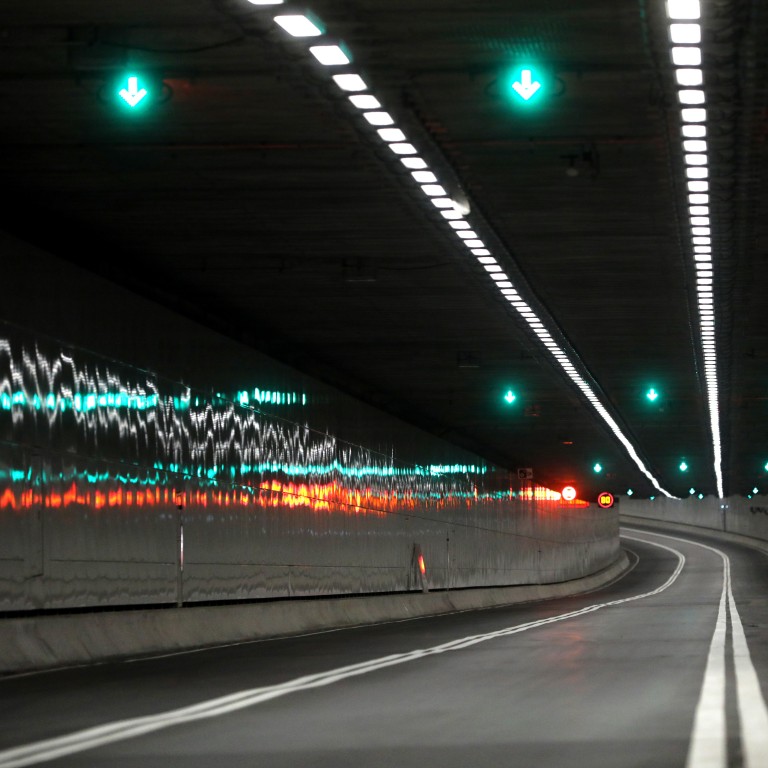
Hong Kong’s tunnel toll plan a good start, but only fewer cars will solve congestion
- The government’s action to rationalise tolls is a positive one that will ease road congestion conditions
- In the long run, controlling the growth in the number of private vehicles still remains the preferable way to resolve the problem
Secretary for Transport and Housing Frank Chan confirmed that the Central-Wan Chai bypass, which directly links Central with North Point and is designed to alleviate the constant congestion on Gloucester Road, is due to open on January 20. But this new link will only partially solve traffic congestion on roads leading to and out of the Cross-Harbour Tunnel on both sides of Victoria Harbour.
The government has scheduled a motion at the Legislative Council later this month on a toll rationalisation and adjustment proposal for the three harbour tunnels, in hopes of diverting traffic from the heavily used Cross-Harbour Tunnel to the other two – the Western Harbour Tunnel and the Eastern Harbour Tunnel. The idea is to raise the tolls for the Cross-Harbour and eastern crossings while subsidising a reduction in the toll for the western crossing to lure traffic to it.
The effectiveness of monetary punitive measures to influence drivers’ behaviour, however, depends on a few factors. In this world, there are certain goods and products for which demand will not change much even if their cost or price fluctuates drastically. Necessary goods and services such as fuel, medicine, rice and transport are oft-quoted examples of this.
Raising the Cross-Harbour Tunnel toll may not push motorists to use the other tunnels because the 1.9km crossing is the shortest route between the Kowloon Peninsula and Hong Kong Island. The tunnel ends on Hong Kong Island in Causeway Bay, which is not only a busy dining, entertainment and shopping neighbourhood but also a strategic and convenient connecting point for motorists headed to the Western, Eastern or Southern districts of the island.
As a matter of fact, motorists from Kowloon or the New Territories bound for Admiralty and Central will find it most convenient to adopt this route. Above all, the Cross-Harbour Tunnel currently charges the lowest tolls for all kinds of vehicles. Therefore, most motorists may still see an overwhelming advantage in using it even though they may crawl through it at a snail’s pace.
Plan ahead and learn rules before using new bypass, motorists urged
Moreover, the more motorists prefer to take the Cross-Harbour Tunnel, the more congested the tunnel will be, with a spillover impact onto surrounding areas and roads such as Gloucester Road, which is the main artery of Hong Kong Island.
Traffic congestion inflicts huge economic as well as social costs on a society in terms of lost productive hours and deteriorating public health due to the exhaust fumes belching out of slow-moving cars stuck in traffic jams. In some countries, congested traffic has been found to cause drivers to feel grumpy, irritable or impatient and has led to them sometimes displaying aggressive driving behaviour, leading to car accidents and – even worse – violent road rage incidents.
Therefore, the government’s action to rationalise tolls is a positive one that will ease road congestion conditions caused by the imbalance in the use of the three tunnels.
To implement this toll rationalisation plan, the government must take note of the sensitivity level to tolls among motorists. More empirical research may be needed to identify the most effective toll levels.
Furthermore, research should evaluate the impact on traffic conditions along the north shore of Hong Kong Island of the Central-Wan Chai bypass because some motorists from Kowloon or the New Territories bound for Eastern District might choose to use the western tunnel, which cuts the travelling time between Central and the Island Eastern Corridor from about half an hour to five minutes, even if there were no toll reduction.
Finally, the root of traffic congestion in any densely populated city is probably its number of vehicles. So in the long run, controlling the growth in the number of private vehicles still remains the preferable way to resolve the problem.
Ken Chu is group chairman and CEO of Mission Hills Group and a national committee member of the Chinese People’s Political Consultative Conference

